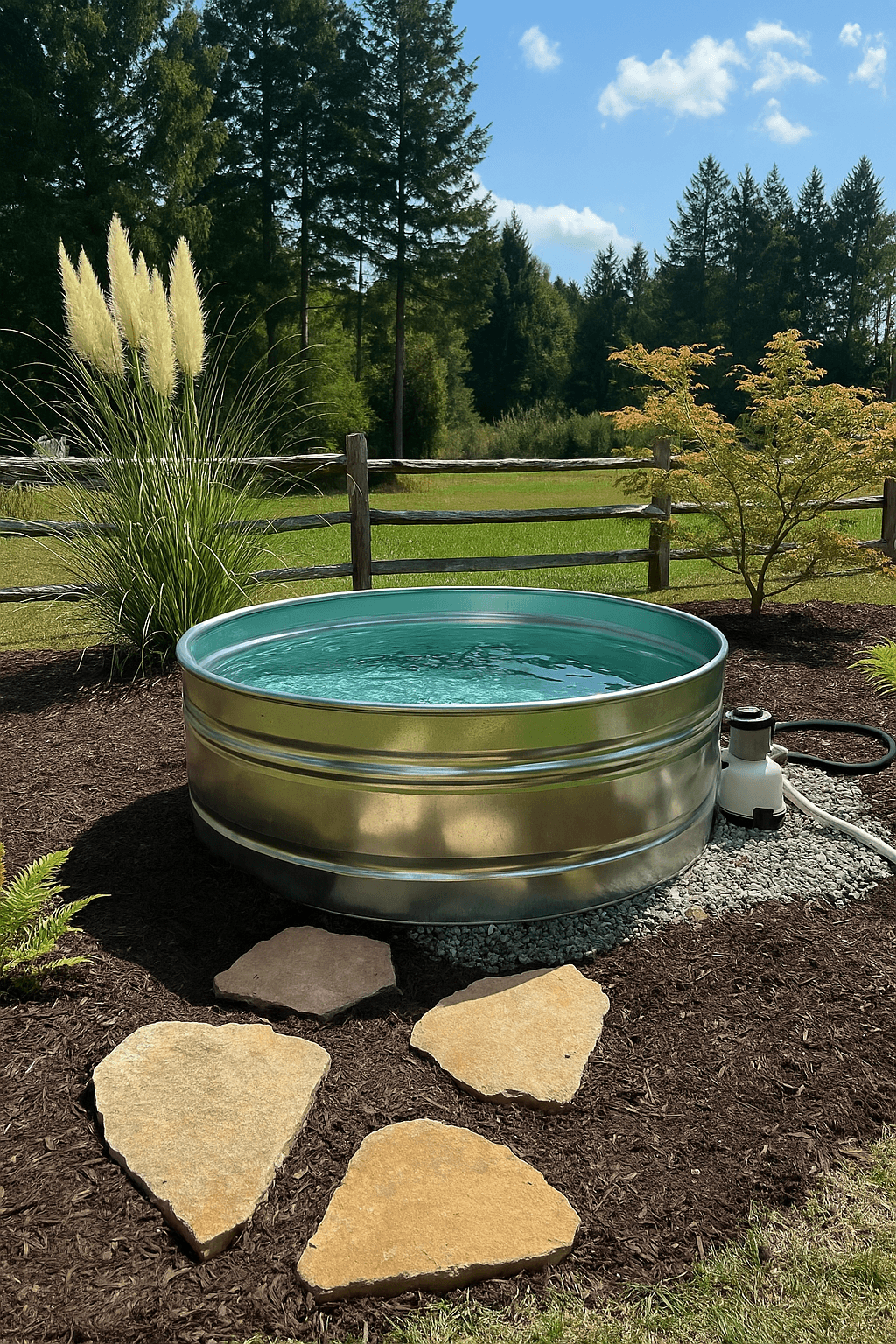More Blog & Articles
Explore Other Blog
Get in touch
Want to chat Stock Tank Pools?
Plunge Pool Maintenance Made Easy: Tips for Clear, Healthy Water
17 June 2025
How to
Eduardo A Morales
Simple Routines for Sparkling Water—All Year Long
Keeping your plunge pool crystal clear doesn’t need to be a chore. With a regular routine and the right tools, Aussie owners can enjoy healthy, low-stress pool water—whether you have a stock tank, concrete, or fibreglass plunge pool.
➡ Skim leaves and debris daily for quick, easy water care.
➡ Run your pump 2–8 hours a day (seasonal adjustment) for healthy circulation.
➡ Regular testing and balancing keep water safe for the whole family.
➡ Pool covers, windbreaks, and a tidy routine save time, water, and money.

“Routine care means more time to relax—your sparkling pool is just a few minutes away.”
Your Step-by-Step Pool Care Schedule
Daily Care (5–10 minutes)
A little consistency beats weekend heroics. These quick habits keep water stable and costs low.
1) Skim & quick tidy
Use a leaf skimmer to remove leaves, bugs, and surface debris. Fit the cover whenever you’re done swimming—this single habit reduces chlorine burn-off, dust, and evaporation.
2) Fast chemistry health-check
Do a quick strip test for Free Chlorine (FC) and pH.
Targets: FC 2–4 ppm, pH 7.4–7.6 (acceptable 7.2–7.8).
Top up liquid chlorine as needed to stay in range.
3) Visual inspection
Look for early algae (dusty green film), cloudiness, or unusual noises from the pump. Check the waterline for sunscreen film and wipe it with a soft cloth if needed.
4) Water level
Maintain the waterline at the mid-skimmer height (or manufacturer mark). Low water can cavitate the pump; high water reduces skimming efficiency.
Weekly Routine (30–45 minutes)
These are your “set and forget” anchors that prevent 95% of issues.
1) Brush and vacuum
Brush walls/floor with a nylon brush (never abrasive pads on galvanized steel). Vacuum settled debris. This breaks algae biofilm and lets chlorine work efficiently.
2) Cartridge/sand housekeeping
Sand filters: Backwash when pressure rises +8–10 psi; a calendar rule like “every 4–6 weeks” is a fallback only. Replace sand roughly every 3–5 years.
3) Chlorine abs policy (if you use them at all)
Your primary sanitiser is the small chlorine tablets we provide. Place one in a floater, never in the skimmer, never touching metal, and never wedged by the wall. Use “closed” cup mode and only replace the chlorine tablet once the one in the cup is dissolved.
Filtration & Pump: Smart Run-Times
Circulation keeps everything honest—chemicals distribute evenly and the filter captures what brushing frees.
Turnover goal, not a fixed hour count
Aim for 2-3 running time day on sand pump and filter, but change run it more if needed (each location is different).
Flow & health checks
Confirm strong return flow and steady priming.
Keep suction lines free of air.
Inspect unions/hoses monthly for drips, salt creep, or wear.
Troubleshooting & Pro Tips
Green or cloudy water
Test pH & FC.
Brush thoroughly; run pump 12–24 hrs continuously.
Clean/backwash filter; re-test next day and rebalance.
Consider partial drain if water is truly unsalvageable; if draining, dechlorinate first and follow local discharge guidance.
Rust in galvanized stock tanks
Never let a tab touch metal. For minor rust: sand to bright metal, wipe clean, spot-coat with zinc-rich cold-galv, then marine-grade epoxy. For persistent issues or older shells, consider a pond-safe liner.
Leaks and seams
Use pond-safe liner/patches or marine-grade epoxies rated for continuous submersion and chlorinated water. Avoid general “flex” coatings that aren’t pool-rated. Always start with a perfectly level base to reduce seam stress.
Products to avoid
Salt chlorinators on galvanized steel (salinity accelerates corrosion).
Routine copper algaecides (staining risk). Prefer Polyquat 60 if you want a weekly preventative.
Abrasive scrubbers, steel wool, acid washes on the metal shell.
Seasonal Advice
Summer (high UV, high bather load)
Keep the cover on whenever you’re not swimming to limit debris and chlorine burn-off.
After parties or heatwaves, check water more often.
Annual Costs & Time
Chemicals & consumables (small plunge/stock tanks): $100–$200/year
Weekly time: typically ≤ 1 hour split across short daily & weekly check-ins
Professional cleans (optional): $60–$150/visit
FAQs
Can I use saltwater in a stock tank pool?
We don’t recommend salt chlorinators on galvanized steel—salinity (3,000–4,500 ppm) accelerates corrosion. If you insist on saline feel, keep salinity <1,500 ppm, use a liner, and accept higher maintenance. Fresh-water chlorine systems are vastly kinder to metal.
What if I leave for holidays?
For trips 1 week+, use one tab in a floater, fit the cover, and arrange a mid-trip check if you can.
How do I clear cloudy water fast?
Don’t drain. run the pump 6–12 hrs, clean/backwash the filter, and re-test.
Quick Reference Targets (copyable)
Filter & Pump Maintenance
Sand pump and filter: Backwash every 4–6 weeks, replace sand every 3–6 years
Check pump and equipment monthly
Troubleshooting & Pro Tips
Green or cloudy water? Do NOT shock with chlorine. Empty pool with hose (easiest way)
Rust in a stock tank? Never place tablets directly on metal—always use a floater. Sand and seal minor rust spots with marine-grade epoxy or place liner on tank.
Leaks? Apply flex seal or pond liner to seams; always start with a level base.
Seasonal Advice
Summer: Check water and skim daily, run pump longer, top up water as needed.
Winter: Winterize








